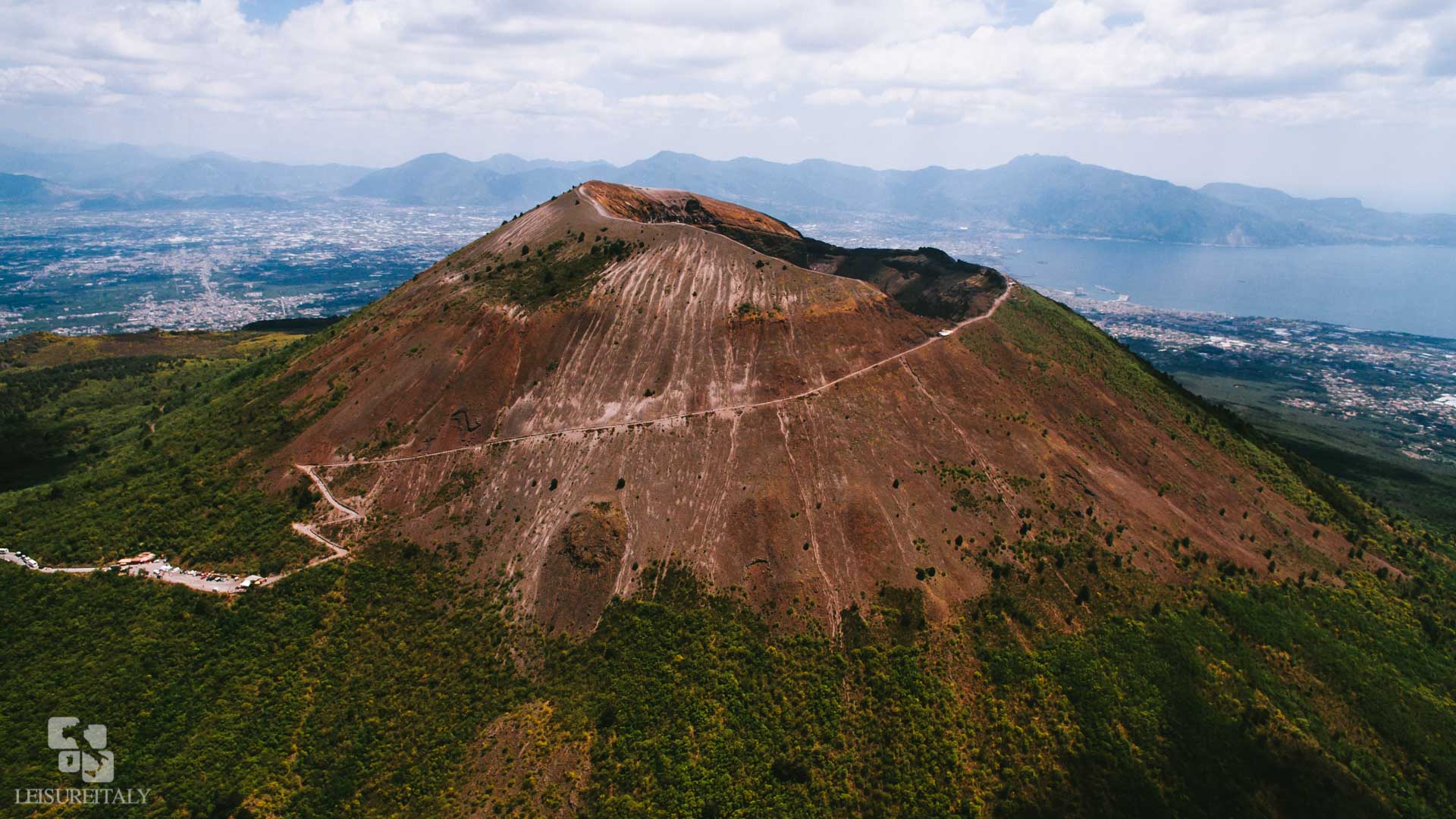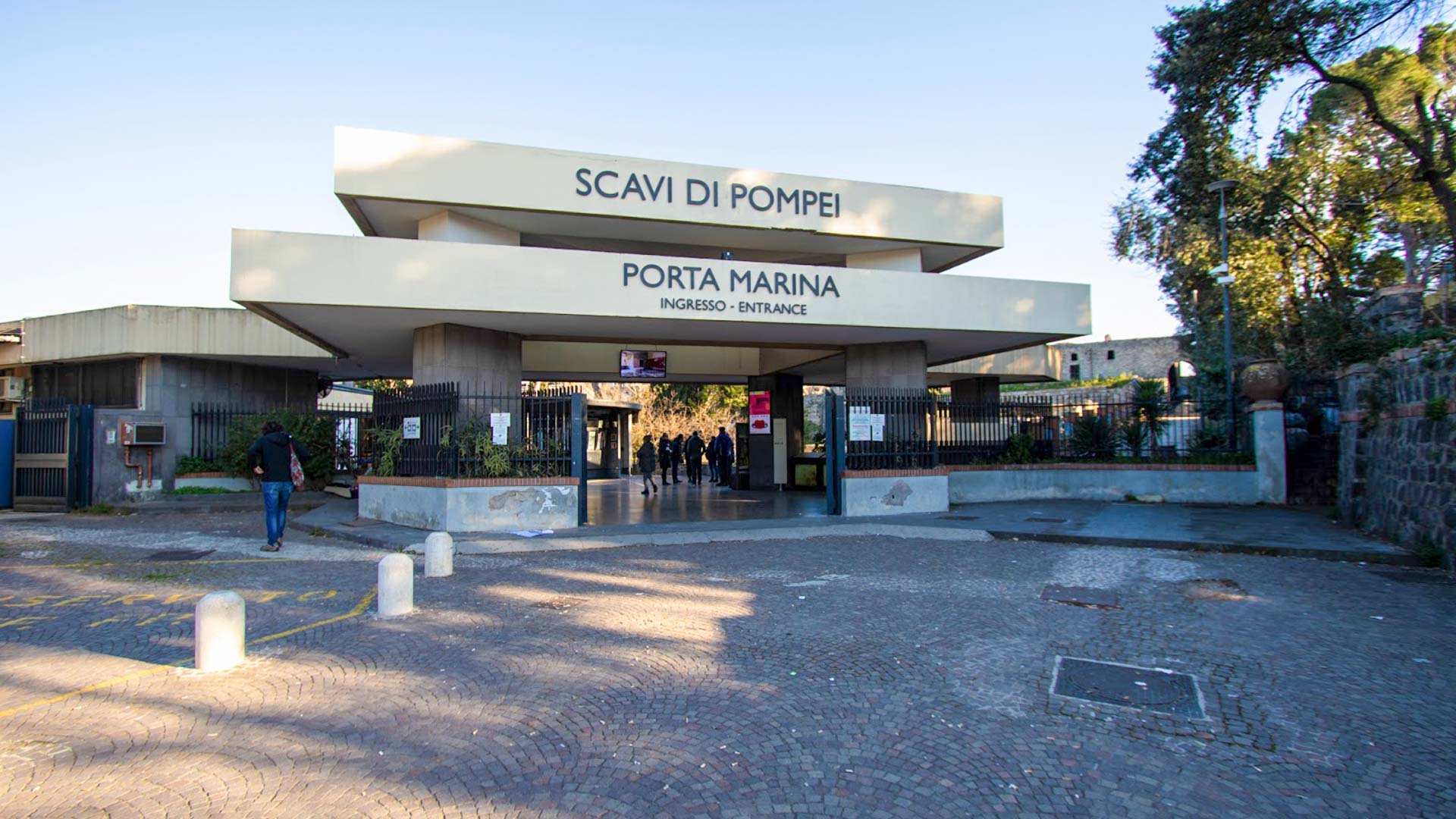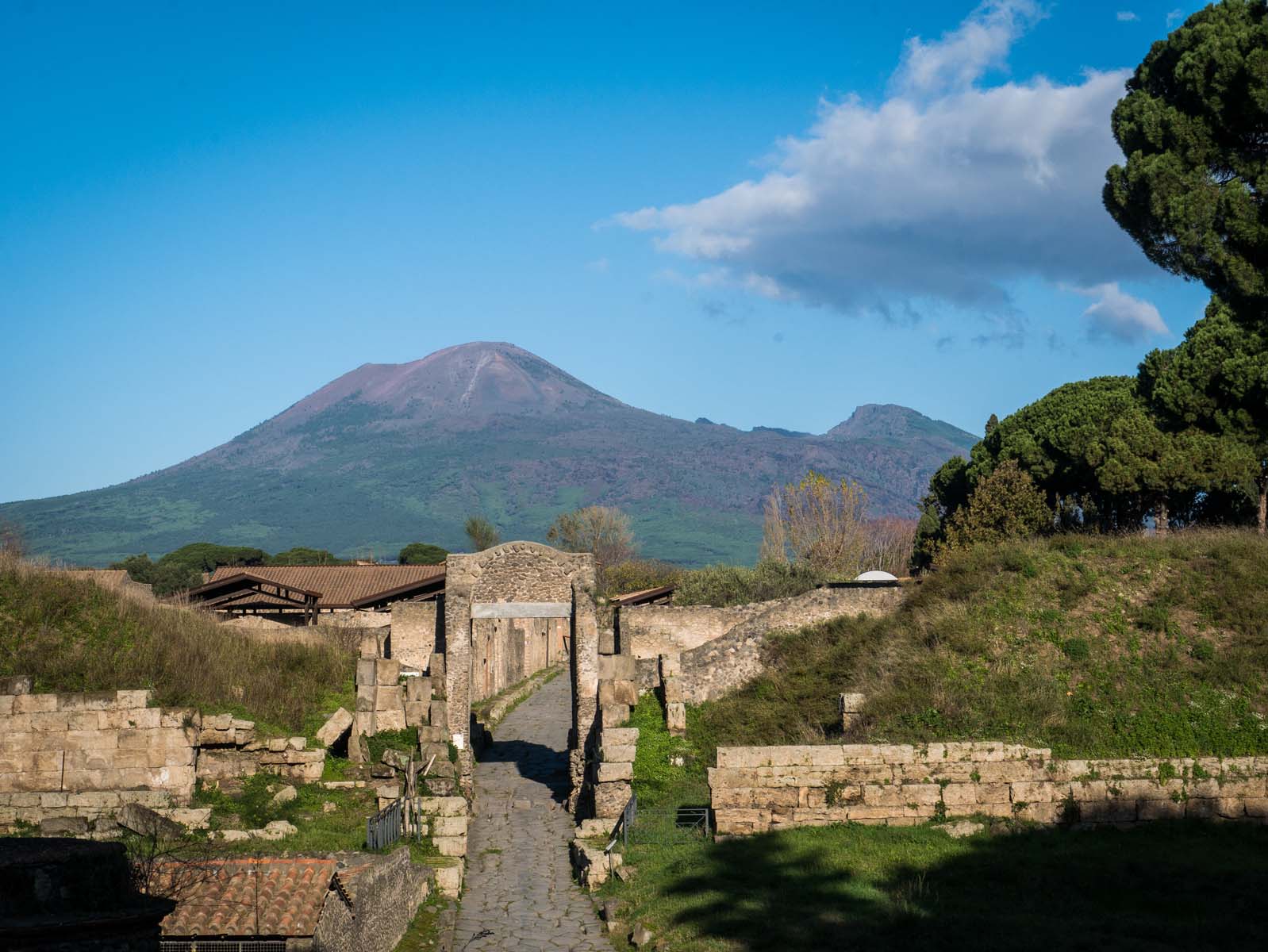The day will start with a scenic drive on the slopes of Mt Vesuvius. You will be driving through the National Park of Mt Vesuvius, past the pine forest and next to the solidified lava from the last eruption in 1944. On the way up, you can already enjoy great views of Naples and the Bay. Also on view is the Volcanological Observatory, first in Europe, founded in 1841 by the Bourbons of Naples!
After a 30-minute drive up, you will start the ascent on foot to the top of the crater. On your left, the impressive silhouette of Mt Somma, which is part of the rim of the original volcano that erupted in 79 AD and buried Pompeii. The walk to the top requires about 25 minutes up the hill on a terrain mostly made out of volcanic ash. On the way up you can admire the Bay of Naples and Pozzuoli, and the three islands of Capri, Ischia, and Procida.
Once on the very top, there will be a short commentary from a volcanologist who will point out the main scientific facts about Mt Vesuvius. Marvel at the massive size of the main crater, its colours, and the steam geysers one can see during the wintertime.
If you wish, you can walk around half of the rim. On a clear day, the ancient Pompeii can be distinguished at the foot of the volcano. You can certainly take great pictures of Capri and the Sorrento Coast.
At midday, you can decide to stop at a winery on Mt Vesuvius for lunch or take a break for a light lunch directly at Pompeii. Please do not hesitate to ask your driver for suggestions.
The Pompeii site extends over approximately 160 acres. To make the best of your time, Leisure Italy offers a qualified guided service. Our guided walking tour is tailored to participants’ interests and walking style.
The following is a suggested itinerary for our private guided walking tour. Let us know if there are any special requests!
In Pompeii, you will first admire the city walls, dating back to the pre-roman Pompeii (4/5 centuries BC). One of the best-preserved ancient gates is called Porta Marina. It connected Pompeii with its port, with a path for charts and one for people.
Once in town, you will be walking on the original road made of volcanic stone. You will notice on the ground hundreds of little white spots made of travertine used to reflect torchlight (nowadays “cat’s eye” on the driving roads).
Your attention will be captured by big blocks of basalt emerging from the road: they were stepping stones used by pedestrians to avoid getting wet when it rained; in fact, unlike other Roman towns, Pompeii didn’t have a complete sewer system because the city was built on top of a lava platform that was too hard to work with.
The city centre is called Forum. It hosts all the buildings with a public function: Religion (the Temple of Apollo, the Capitolium and the Temple of the Emperor), Trade (the meat and fish market called Macellum, the textiles market headed by a priestess named Eumachia), Administration (the Basilica) and Politics (Comitia). Other facilities in the Forum included exchange offices, public restrooms and a public scale (tabula mensurae) aimed at comparing and weighing farmers’ products. In the Forum, you may also see a display of the famous human casts.
Close to the Forum were public Bath-Houses where both men and women (in different sections), poor and wealthy, free persons and slaves could access daily hygiene. Pompeii had three such complexes within the city and two others right outside of it. Each Bath-House had the following facilities: a changing room (apodyterium), a tepid room (tepidarium), a hot room (calidarium) and a Gym (Palestra).
You will notice several places fronting the road with large vases built in a masonry counter: this is what the Romans called popinae, today’s inns! These jars were full of food and beverages, and many ancient Pompeians would stop in such places for lunch.
You will recognise some of the Bakeries of Pompeii, with their ovens and grinding machines: incredible but true, some round carbonized loaves of bread were found during the excavations. Remains of ancient food, such as almonds, pine cones, figs, lentils, etc, have been discovered during excavations, but are seldom on display due to preservation reasons.
Upon request, your visit can include the infamous Lupanare (Brothel): it displays Roman frescoes featuring erotic images!
Do not miss the chance to discover Pompeii’s areas for public performances. There is an outdoor Theatre (for comedy and tragedy), an indoor theatre (Odeion, for mimes and declamation of poetry) and an amphitheatre (for games like gladiator fights or game hunting). You shall visit at least one of those places.
On request, the tour can also include the small but wonderful museum (Antiquarium), featuring finds from the excavations, as well as plaster casts made of the ancient Pompeians.
Pompeii is too big to visit entirely in a day. Leisure Italy will make sure you see the highlights. Our optional guided tour aims to visit an example of each building type.
After the tour at Pompeii, you could stop for a few minutes for a fresh-squeezed orange juice or to browse the souvenir shops if you wish.











Tour Reviews
From our initial interaction with Vincenzo to the end of our tours of Pompeii and Mt. Vesuvius everything was absolutely perfect. Our group of 16 people ranging in age from 6 – 75 was picked up in an airconditioned mini bus from Positano and driven to Pompeii. Our fabulous guide Fabrizio educated (and entertained) us throughout the hour long drive so that when we arrived at Pompeii we were armed with knowledge :). We booked the 4kids activities so another wonderful guide – Federica – took the children through Pompeii. All the kids were engaged and learned a ton from the interactive tour. And the adults were blown away by Fabrizio’s knowledge of Pompeii (he also has a great sense of humor and had us laughing most of the day). We then travelled to Mt Vesuvius and hiked up to the crater, stopping along the way so that Fabrizio could point things out and we could catch our breath :). This was an absolutely fantastic day for our extended family and i truly could not recommend it any more. Certainly one of the highlights of our 2 week trip to Italy.
We had an absolutely amazing experience with Leisure-Italy. I put together a private tour to see Herculaneum, Vesuvius and Pompeii with the help of Vincenzo, who answered every query promptly. Our guide, Fabrizio, was there to meet us at the cruise port with the air conditioned mini-bus and proceeded to give us an in-depth guided tour to each area. He took account of our individual walking capability, took photos, and recommended a great place to eat. And he knew how to avoid crowds and the answer to every question we asked. I can highly recommend Leisure-Italy.